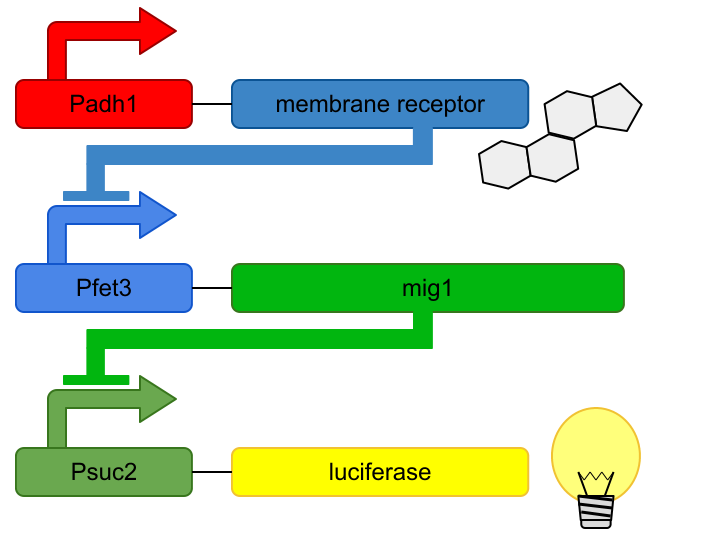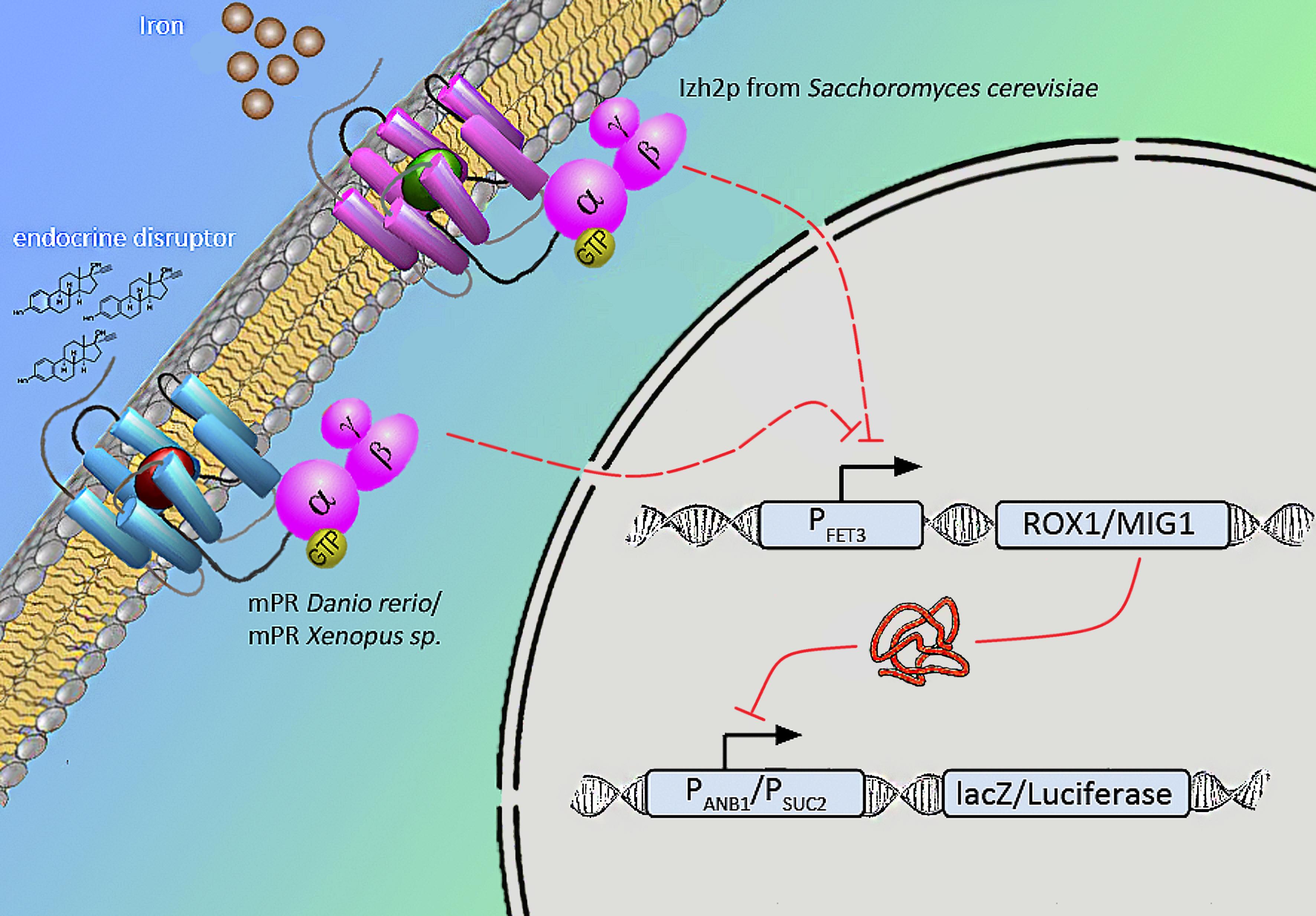Team:Tuebingen/ProjectMechanism
From 2012.igem.org
Mechanism
Contents |
Naturally occuring iron receptors of the PAQR family are found to repress fet3 promotor on high levels of extra-cellular iron. According to [http://www.ncbi.nlm.nih.gov/pubmed/18603275 J Smith et al.] human mPR expressed in yeast induced the same signal binding to estrogen. Relying on this results we will try to express various mPRs of Danio rerio, Xanophus laevis in yeast which we find fitting to measure endocrine substances that influence fish.
We will transform the negative signal (fet3 repression) into a positive signal by regulating a repressor (rox1 or mig1) with Pfet3. This repressor will in turn regulate the expression of the reporter gene (firefly luciferase or beta-galactosidase) and allow quantitative measurement.
On the side several graphical representations of this mechanism are available.
Receptors
Membrane progesterone receptors are membrane bound, seven-transmembrane receptors and belong to the PAQR family (progesterone adiponectin Q receptor). These G-protein coupled receptors activate inhibitory Gi units.
Inhibitors and their targets
An appropriate inhibitor/promotor combination is a crucial step in our pathway and should be selected wisely.
Finally we chose fet3 as our promoter and both rox1 and mig1 as inhibitors. It is very likely, that they don't seem to repress any gene expression that are crucial for yeast.
Reporter genes
The last station of our signaling pathway should be a reporter gene which amplifies our initial signal to allow a quantitative measurement.
The enzyme luciferase fulfills these conditions and is our candidate of choice.
 "
"


